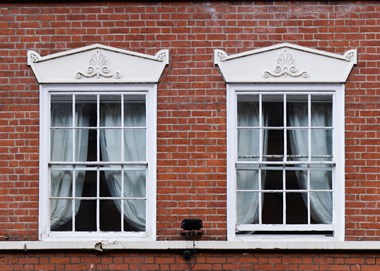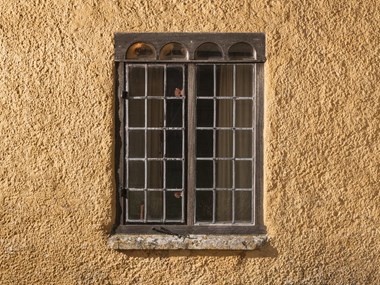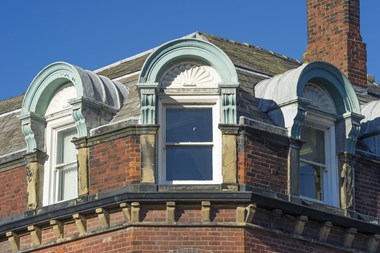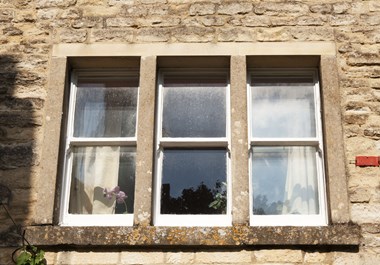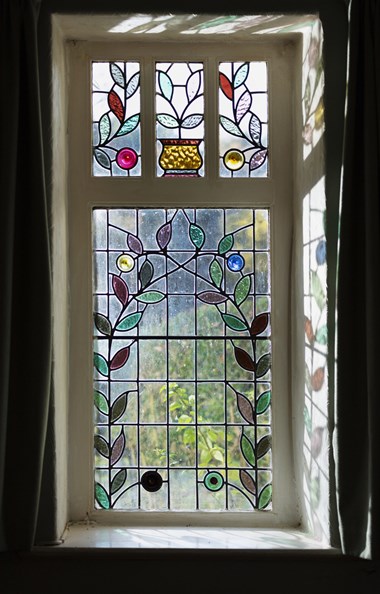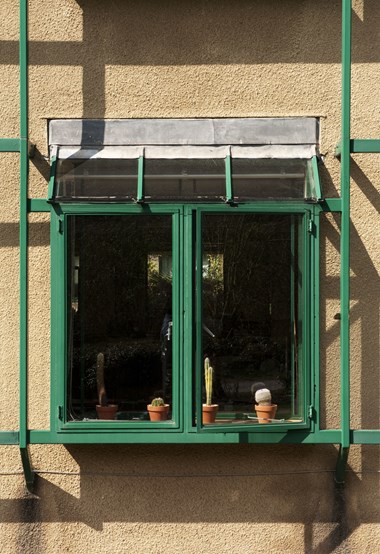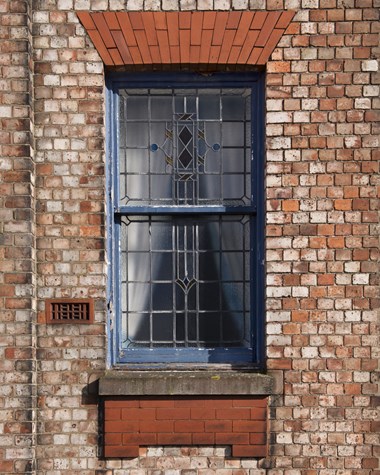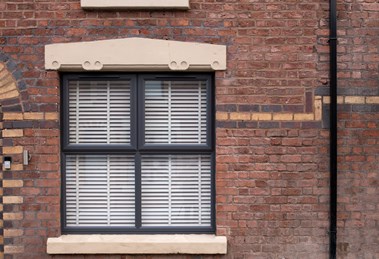Repair or Change Windows in an Older Home
Windows do more than keep the weather out. These eye-catching features add character to our homes through their design, materials and workmanship. Repaired and adapted, older windows can be as energy efficient as new ones.
Repairing windows
For historic windows, repair is a better option than replacement because:
- Repairs usually cost less
- Repairs preserve the character of your home and its historic fabric
- Repair will not usually need consent
- It is more environmentally sustainable to repair than to replace
- Repairs usually last longer than modern replacements if they are made by a skilled joiner using the right materials
Complete replacement should be a last resort. If repair is beyond the skills of a good joiner or metal worker, the next best option is to get an accurate copy made.
Timber window repair tips
Properly maintained, historic timber windows can last indefinitely as they were usually made of high-quality durable timber.
Use the best methods and materials
There is a widely held view that repairs are short lived and not as good as new replacement windows. This need not be the case if you use an experienced joiner and the right materials, even for external softwood frames. It is the poorly thought-out repairs, or ones using unsuitable materials, that will quickly fail.
Do the minimum
Limit any work to the minimum required to fix the problem.
Do the work on site
Wherever possible, repairs to window frames should be carried out on site, particularly when the frame is built-in and cannot be easily removed without damaging either the window or the surrounding wall.
Window sashes
The individual sashes from sash windows and casement windows can usually be removed for repair without damage.
Keep track of components
If several windows have to be dismantled in the course of repair, mark and record all the components and where they fit in before beginning the work as there are bound to be tiny variations.
Metal window repair tips
Metal windows can suffer from surface rust, distortion, excessive build-up of paint or failed hinges and fittings. They can often be economically repaired and draught-proofed, avoiding the need to replace them.
Rust does not mean replacement is necessary
- Rust expands up to seven times the volume of sound metal, so corrosion often looks much worse than it really is.
- Heavy rust and paint can be removed by acid pickling or flame cleaning. There are several firms specialising in this kind of work.
- Renovation can be done on site, using wire brushes, files, and small grinders to remove rust and scales. Or the work can be done in a factory, where the windows can be grit- or shot-blasted and galvanised or zinc-sprayed.
Type of metal matters
The best way of repairing a metal window will depend on the type of metal it is made of:
- Ferrous metals will have different problems to non-ferrous metals such as bronze and aluminium, and within the ferrous metals wrought iron will need to be treated quite differently to cast iron or steel
- Any necessary repairs to wrought iron or steel windows can be made by a metalworker welding in replacement sections
- Cast-iron windows cannot be welded because they tend to crack when heated, but they can be repaired using a technique known as 'cold stitching'
The manner of production is also important: for example, early steel windows (before the mid-1950s) were not galvanised and so are particularly prone to corrosion, which often appears as rusting of the horizontal glazing bars and the bottom rails.
Read more about conservation of metal windows: Historic steel-framed windows in volume 162 of 'Context', the Journal of the Institute of Historic Building Conservation, published by Cathedral Communications Ltd in November 2019.
For more information on repairs to windows see our guidance below:
Tip: It might be cost-effective to plan energy efficiency improvements to your windows during repair work. See advice below on keeping the cold out.
Keeping the cold out
There is no reason why older windows cannot be as energy efficient as new ones.
To improve the energy efficiency of your windows, we recommend either a combination of repairs and draught proofing, or secondary glazing.
In some situations, secondary glazing can bring even greater energy efficiency improvements than double glazing.
Repair and draught proof windows
Making sure that windows and frames fit well reduces draughts and heat loss, so does adding draught-stripping.
Our research into different ways of making windows more energy efficient revealed that you can significantly reduce heat loss by using any of the following:
- Window shutters
- Insulated blinds
- Thick curtains
If you have window shutters, close them at night. If your shutters are missing, consider having new ones made.
Add secondary glazing
To further reduce heat lost through windows and match the performance of new windows, consider installing secondary glazing.
This retains your existing historic windows and, if designed carefully, will preserve the outside appearance of the house. Make sure the design of the secondary glazing is compatible with any existing window shutters, panelling or mouldings.
It’s important that where you install secondary glazing, you prevent condensation and mould developing by not draught-proofing the original window.
What about double and triple glazing?
Double or triple glazed windows have multiple panes of glass, designed to reduce heat loss and noise. They have a lower life expectancy than single glazed windows however, needing replacing roughly every 30 years compared to 60 to 100 years for single glazed windows.
Replacement of historic windows with double or triple glazing may require listed building consent.
Double glazing
For some types of older window, it may be possible to fit double glazing if the window frame sashes or casements are thick enough.
Alternatively, new double-glazed sashes or casements may be fitted into the existing frames. More information on slim-profile glazing is available in our guidance on traditional windows and upgrading.
Triple glazing
Triple glazing offers even better thermal performance and sound proofing, so why do we recommend secondary glazing instead?
Because research has revealed that:
- Secondary glazing can reduce heat loss by over 60%
- Secondary glazing has lower environmental impact than double or triple glazing
PVCu windows
Although PVCu (unplasticised polyvinyl chloride) rigid plastic replacement windows are popular, there are good reasons for not replacing older windows with them.
Appearance
Their appearance can have a negative impact on older buildings. Because the components used to manufacture PVCu windows are weaker than their timber counterparts, they tend to be much thicker. They also have different detailing and opening arrangements. For example, in traditional windows the glazing bars (usually wooden or metal) are rigid and separate the panes of glass, whereas in PVCu windows they are often only strips of plastic inserted within the glass sandwich of a double-glazed unit.
They don't last as long
The service life of PVCu windows is relatively short (less than 25 years) compared to well-maintained traditional windows (many of which survive for over 100 years).
Difficult to maintain and repair
PVCu windows are not maintenance-free and can be difficult to repair. As a result, they are usually replaced at the end of their service life. Although it is possible to recycle PVCu, this is still not done widely.
Higher environmental impact
A PVCu replacement window will have a higher environmental impact than a traditional window that's been upgraded to improve its energy efficiency.
Insulating dormer windows
Effective insulation of dormer windows can be tricky. Every junction and gap needs to be carefully insulated. If dormer windows are not insulated or the insulation is poorly detailed, they can impact the energy performance of the whole roof. Ideally, the upgrading of dormer windows should be done together with general roof upgrading work.
More about insulating dormer windows
Dormer windows can be a very prominent feature on many historic buildings. Avoid making changes that affect their proportions or external features if you are upgrading one. This is even more important if the design of the window reflects that of other windows on your building or neighbouring buildings.
For listed buildings and those in conservation areas, talk to your local planning authority before adding insulation to dormers, particularly if there are likely to be any changes in appearance.
Why preserve historic windows?
Windows make an important contribution to the character of historic buildings. Your windows may be part of your home's original design, or they may have been altered or replaced.
Some are still glazed with historic glass which is now very rare and valued. Window glass was an expensive, hand-made product until the mid-1800s, when new processes made larger sheets possible. The thinness and imperfections of old glass make it attractive, but also fragile.
Detailing around window frames has changed over time. These details help to date the window and the house. Thinner, lighter glass meant that frames and glazing bars could be slender. As larger sheets of glass became fashionable, frames needed to be stronger. Consequently, from the mid-19th century, the design of sash windows was adapted. To make a firmer joint ‘horns’ were introduced where the side rails of the frame stick out a little way below the bottom rail.
Historic windows were hand-made by craftsmen, often from more durable timber than we have today. The importance of historic windows, with their wide range of styles and ages, can vary. But evidence of craftsmanship, the survival of old and rare material and detailed design are all of value, and can make them of special interest.
Gallery
Please click on the gallery images to enlarge.
Can I replace non-historic windows?
Some windows, if they are later replacements, may not contribute to your building's historic interest and may even spoil its appearance.
An exception to this could arise where the replacement windows were installed during an important later phase of construction, even though they do not follow the original historic pattern.
You could consider replacing them with ones that are in keeping with the other historic features of your home. Old photographs, or similar houses nearby, may have examples you can base your replacement windows on.
We will support the removal of non-historic windows provided it is clear that they are not of historic or architectural interest and that the new windows are of an appropriate style that enhances the building. Replacement windows will have to comply with building regulations under Approved Document L, which requires new windows to be of the same or better energy efficiency. Either slim profile double glazing or secondary glazing would satisfy that requirement.
For more guidance on how building regulations relate to windows see:
Minor external additions
Minor external fixtures, for instance trellis work for climbing plants, discreet grab handles, house name plates, bat and bird boxes and brackets for hanging baskets are unlikely to affect special interest if not extensive, discreetly designed and located and if fixed carefully to minimise damage to the building.
Get the help, advice and permissions you need
-
Check what permissions you may need
Like-for-like repairs will not usually need consent. If your house is listed or in a conservation area with an Article 4 Direction you are likely to need consent to make any alterations to windows.
-
Who do I contact?
This page describes the key points of contact and sources of advice if you are thinking of making changes to your home.
-
Where to find specialist help
When repairing or replacing windows it is best to consult a joiner or metal worker with previous experience of historic buildings. This page will help you find and choose people with the expertise you need.


